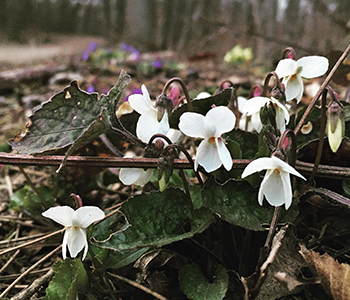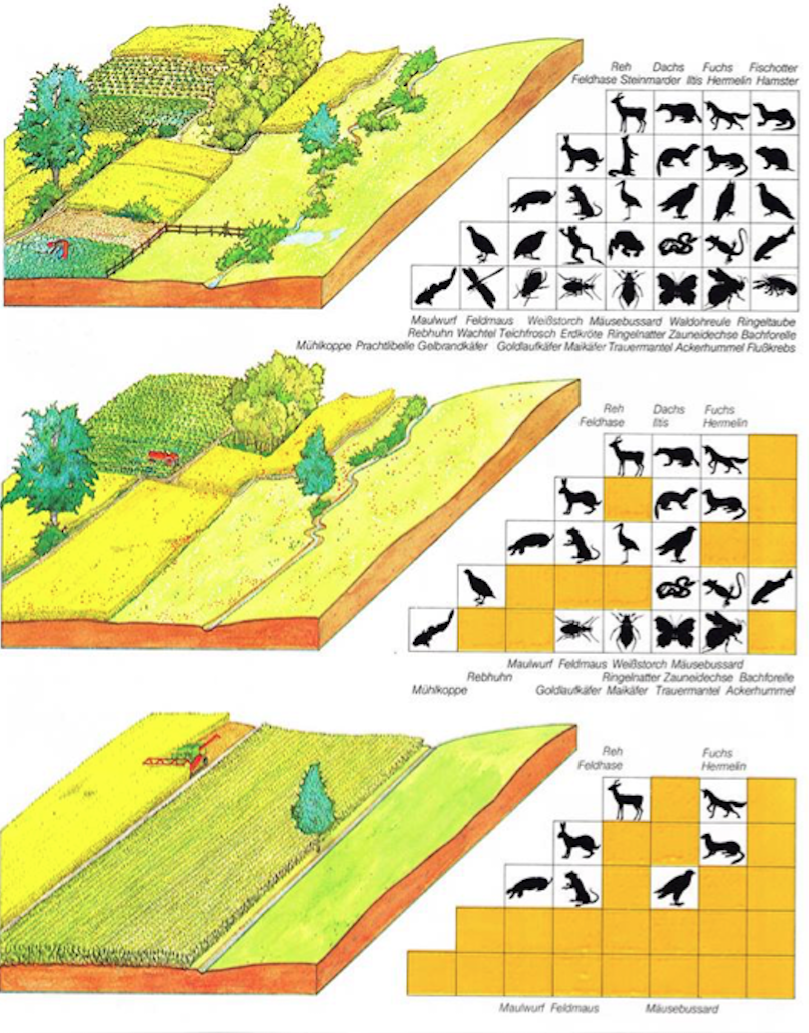
Biodiversity – what each & every individual garden owner can contribute
Basically, it's quite simple. You would only have to let nature take its course and it would come back on its own. And of course, in reality it is not quite so simple after all.
March 2020
Online translation of the original text with DeepL.
Bee deaths, bird deaths, insect deaths (→ see current facts & figures, on a German sience site), forest dieback, ... - the big and frightening buzzwords of our time. Phenomena to which one is seemingly helplessly exposed. But as is so often the case, you can achieve a great deal on a small scale if only as many people as possible do it. But what is it all about?
Biodiversity according to the Biology Dictionary is defined as follows: "Biodiversity is a term which describes every living organism within a single ecosystem or habitat, including numbers and diversity of species and all environmental aspects such as temperature, oxygen and carbon dioxide levels and climate. Biodiversity can be measured globally or in smaller settings, such as ponds.«
This refers to fauna, flora, aquatic life, micro-organisms and in general to the whole of all ecosystems. Everything is connected to everything, if one element is lost, it will affect the ecosystem and the ecosystem will affect the others.
So if an animal or plant dies out, the impact is on the whole. If agriculture and forestry are based on monocultures, the consequences are exactly those we are currently struggling with: for example, spruce forests that fall victim to the bark beetle and climate change. Spruces come from northern climes, were never native to Central Europe and were settled here because of the good wood they provide for industry. In our latitudes, mixed forests thrived, which were gradually cut down for economic reasons. But only if there is a variety of different trees in the forest, this protects against weather unbill and pests. Not every tree species is equally susceptible to everything, which is why a mixed forest is the best guarantee for its preservation. Now, in the face of ailing forests, the emphasis is again on mixed forests.By the way, trees are one of the most important CO2 sinks:
A 120-year-old beech, for example, with a height of approx. 35 metres, stores around 3.5 tonnes of CO2 over its lifetime (and, due to the denser wood mass, around one tonne more than a comparable spruce). Only when a tree has reached a certain age and a certain mass can it absorb relevant amounts of CO2, which is why current reforestations will only have an effect in many years.
→ to illustrate: Austria's annual per capita CO2 emissions rose from 6.48 tonnes in 1971 to 8.10 tonnes in 2018.
By the way, the same applies to wine in particular: the famous Gemischte Satz (vinyard blend) used to be common all over the world. Many different varieties mixed together in the vineyard. If late frosts occurred in spring, only the early sprouting varieties were affected, if fungal infestation occurred, then only the susceptible varieties were affected, etc. In this way the winegrowers were able to secure their harvests over the years.
The opposite therefore applies to monocultures. A single pathogen is enough to destroy the field plants of entire countries. At present, for example, a fungus is threatening the entire banana production of Latin America, since almost all - 90% - of the banana plantations are cultivated with the Cavendish variety. So it is quite realistic that bananas will soon disappear from our markets.
In short, biodiversity is the key to our food security and survival. So what exactly can we do:
- Use local and organic cultivation (no herbicides and pesticides) for food
- For the promotion of small farming structures, prefer to shop at the market rather than in the supermarket or have organic produce delivered
- Do not mow the garden until after the day of St. John (24 June). This is an important deadline in agriculture, by which all plants and grasses have been sown. You will see how alive your garden suddenly becomes and even aromatic small strawberries grow in the meadow. Obviously you will need the (motor) scythe then. But maybe it can be used for at least a part of the garden.
- Avoid lawn robots, they lead to monoculture, destroy insects, small creatures and hedgehogs and are a constant stimulus for the growth of the grass. In addition, they naturally eat electricity, must be generated and are also audible. This constant intoxication from neighbouring gardens can be disturbing.
- Leave grass & meadow islands in the garden when mowing, on which everything that wants to grow is allowed.
- Bring nettles back to your gardens. Stinging nettles attract up to 130 insect species, are also an indicator of the soil quality of your garden and are edible. Besides the leaves, the nutlets are also edible. More about the importance of the stinging nettle.
- Buy only peat-free potting soil, ideally organic or even better compost. Peat comes from valuable moorlands, which are destroyed by mining.
- Set up insect hotels
- Put bird baths in the garden now, renew the water daily and clean the bowl (birds urgently need watering places in the increasingly dry weather and hot summers).
- Don't feed the birds only in winter (in the meantime it is recommended to feed birds also in summer, because they can't find enough food due to the monocultures)
- Leave the leaves in autumn and let some corners of the garden go wild. They serve as nesting places and hiding places for many species
- Herbicides must generally be taboo
- Plant native hedges and shrubs as important habitats for species
- Nurture and plant trees. Apart from their CO2-climate effect, their evaporation also cools the air. It is about 3 degrees cooler under a tree; sitting there is more comfortable than under a parasol, where the heat accumulates.
- Plant herbs and look forward to the multitude of bees, butterflies and insects that attract them - and to an enrichment for your kitchen
- Do not water the lawn in summer, it regulates itself. In dry periods, lawn sprinkling is prohibited anyway. Water and robots stimulate grass growth equally. The two are a symbiotic chaos mix.
- Nevertheless, if you prefer to enjoy a lawn instead of a meadow, please follow environmentally friendly advice such as that given by the Guardian
- … thanks for completing your own list
- Here to the conclusion a book tip: The Garden Jungle by David Goulson. "Gardening to save the planet"
- … and please take a look at this GRAPHICS, it says it allt:





